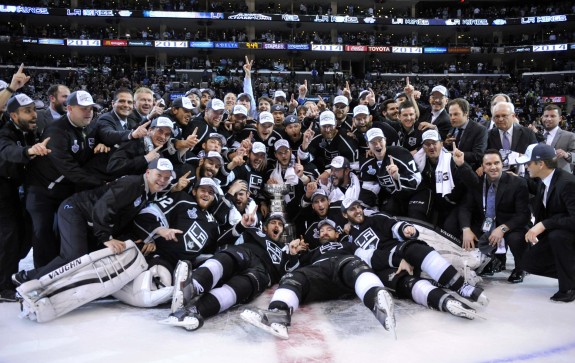Defining a dynasty. A question that has surfaced in light of the recent World Series championship of the San Francisco Giants. It was a title that marked the third in five years for the Giants, albeit none of them coming consecutively. Which of course begs the question of where one sets the criteria bar for a team of dynastic proportions.
According to NHL.com, there are nine such hockey dynasties. All have a minimum of four Stanley Cup titles. Among them are the original Ottawa Senators (1919-27), Toronto Maple Leafs (1947-51), Detroit Red Wings (1950-55), Montreal Canadiens (1956-60), Maple Leafs (1962-67), Canadiens (1965-69), Canadiens (1976-79), New York Islanders (1980-84) and Edmonton Oilers (1984-90). All of those clubs also had repeat winners.
As you’ll also notice, while each spanned a different era, none of the said dynasties above came post-1990. So while those teams do set the bar, the modern NHL certainly poses far more challenging obstacles. A salary cap, free agency, expansion and at least four playoff rounds, make for quite the daunting task of forging a dynasty. Recently, the Los Angeles Kings and Chicago Blackhawks have captured a pair of Cups in a span of less than five years. Prior to that, one would have to look at the Red Wings 1996-97, 1997-98, 2001-02 and even 2007-08, which may be stretching it in the time frame. Those Red Wings teams also book ended that run with a couple of losses in the Final. There’s also the New Jersey Devils of recent vintage, who didn’t win consecutive Cups but did win three, along with four Final appearances from 1995-2003. Plus the 1990-91, 1991-92 Pittsburgh Penguins, who had a spectacular team in 1992-93 but were knocked off by the Isles.
The difference in each era, also makes for a classic debate. For instance, while the Canadiens are the gold standard for Stanley Cup titles, does the Islanders run look more impressive given the amount of playoff rounds they had to play through? In other words, how long does a dynasty have to connect and sustain itself, in order to achieve greatness?
So where do we begin assessing what a dynasty is? What are the benchmarks to get into the conversation?
In my book, consecutive Cups are a must. Yes division titles, 100-point seasons, a Presidents’ Trophy and a Conference title mixed in are all honorable accomplishments but there has to be a sequence of connected Cups to make it a true dynasty. Theoretically of course one could have a scenario in which a team could win five Cups in a ten year span, without any of them being consecutive, which would make for a decade of dominance but again, how much of that core is connected in the modern NHL or does the amount of players involved in each title matter at all?
It does make for engaging conversation. Do we maintain the bar at a high level or does it change with an ever evolving sport?
